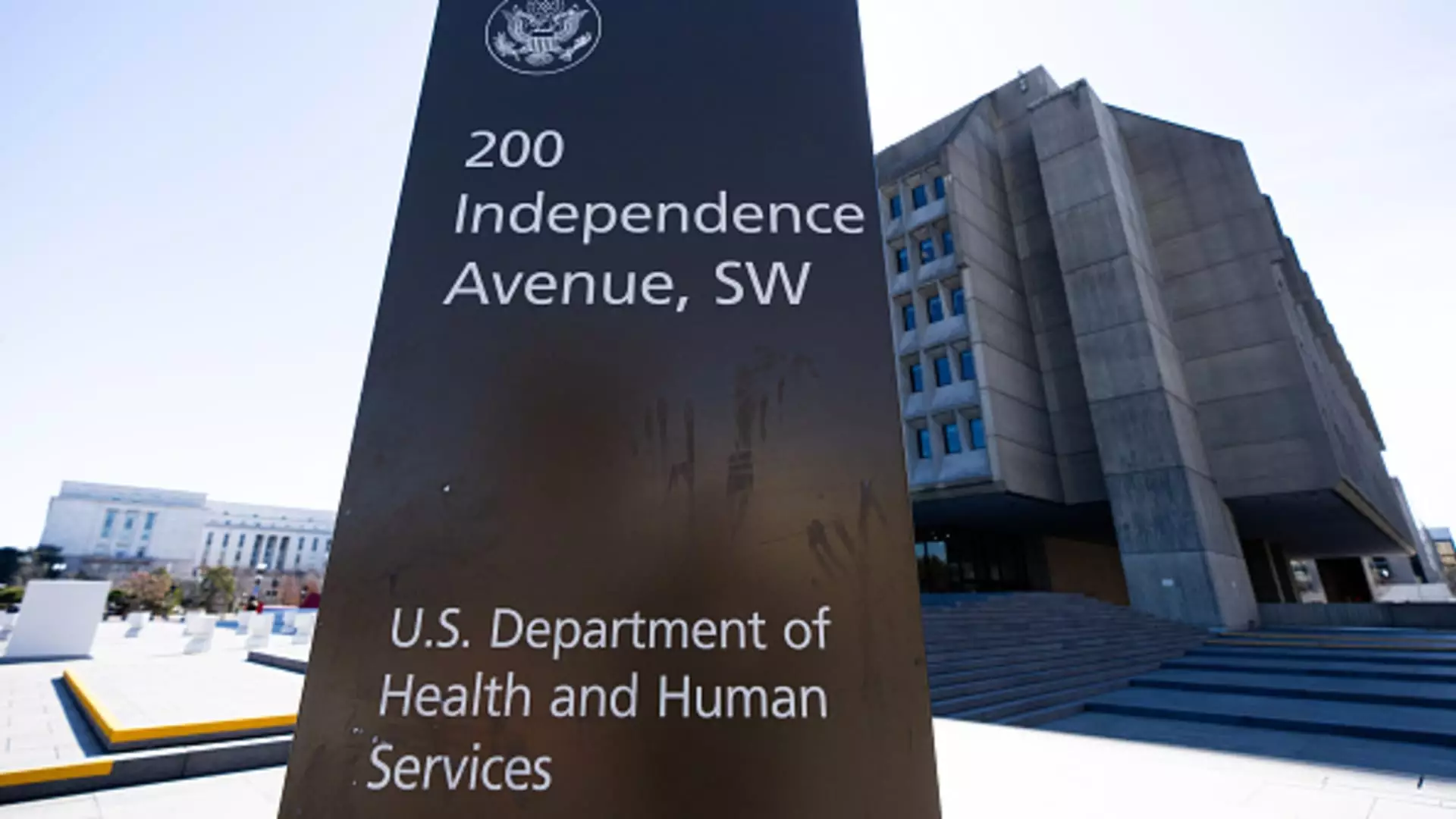In a move that can only be described as catastrophic for the nation’s health infrastructure, the U.S. Department of Health and Human Services (HHS) has begun issuing dismissal notices to employees, signifying a massive transformation that threatens to dismantle an essential public health safety net. With up to 10,000 positions expected to be eliminated, this overhaul, spearheaded by Health Secretary Robert F. Kennedy Jr., arrives in tandem with a series of decisions that diminish the collective bargaining rights of federal workers. The newly minted Administration for a Healthy America, which aims to streamline operations, is hardly comforting when one considers what such a “streamlining” could entail for public health and safety.
The implications of these layoffs are profound. HHS oversees a staggering array of responsibilities: from tracking health trends and disease outbreaks to administering crucial health insurance programs. Cutting nearly a quarter of its workforce will undoubtedly leave a gaping hole in the capacity to respond to future health crises, which could prove disastrous in moments of need. Senator Patty Murray rightly declared that renaming the agency “the Department of Disease” would resonate more accurately with the calculated dismantling of its critical functions. We are faced not just with job losses but also with a precarious future for the American populace.
Funding Cuts: A Dire Ripple Effect
The ramifications extend well beyond federal agencies, as significant reductions in funding will trickle down to state and local health departments. The recent decision by HHS to retract more than $11 billion in COVID-19-related funds will decimate budgets, leaving many local health departments scrambling. Some have already identified hundreds of job eliminations; a grim testament to how quickly the effects of federal decisions can resonate throughout the nation. Public health is inherently a communal effort, and the cascading layoffs jeopardize our collective ability to respond to health emergencies, which we now know can emerge without warning.
Lori Tremmel Freeman of the National Association of County and City Health Officials highlighted the alarming reality that many of these losses are occurring at a rapid pace. It is essential to recognize that health departments perform critical roles in managing disease outbreaks, conducting vaccinations, and ensuring the safety of public health. These services are not merely nice to have; they are lifesaving.
Union Rights Under Attack
A simultaneous assault on collective bargaining rights constitutes another devastating layer to this overhaul. Trump’s executive order stripping these rights away from federal employees, including those at the Centers for Disease Control and Prevention (CDC), is a blatant attempt to weaken workers’ protections. By eliminating the ability of employees to negotiate for better conditions, the Trump administration is not merely trimming fat; it’s carving into the very sinews that hold our health infrastructure together.
The CDC, on the front lines of health monitoring and response, risks becoming a shadow of its former self if fewer workers are given the support and protections they need to perform their vital roles. Employees are already pushing back through organized efforts to join unions, seeking solidarity in a time of uncertainty. The loss of collective bargaining is tantamount to removing a critical safety mechanism that ensures public servants can vocally advocate for themselves, free from fears of retaliation or retribution.
More with Less? The Illusion of Efficiency
HHS officials like Kennedy characterize this major overhaul as a move to do “more with less,” yet such rhetoric disguises a troubling reality: efficiency at the cost of human life is a dangerous gamble. The statistics surrounding proposed job cuts offer an alarming projection of what’s to come. If 3,500 positions at the FDA, 2,400 at the CDC, and significant reductions at other key institutions are a sign of HHS’ future, we must ask ourselves—how many lives are we willing to place in jeopardy for the sake of bureaucracy?
Kennedy’s assertion of tackling inefficiencies is as disconcerting as it is misleading. In instances where public health is involved, drastic cuts do not resolve inefficiencies; they compound vulnerabilities. The intention behind streamlining operations must be balanced with a sustained commitment to public health and safety, which these cuts fundamentally undermine.
This tragic reconfiguration of HHS signals not just an administrative shake-up but rather a perilous convergence of health risk and governance. Each layoff is not just a number on a spreadsheet, but a potential threat to lives yet to be lost in the ebb and flow of pandemics, natural disasters, and the everyday health challenges facing American communities. The repercussions of this overhaul reverberate beyond the offices of HHS—they reach into every household, questioning the ability of our leaders to protect us in moments of crisis.


Leave a Reply